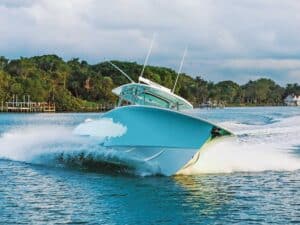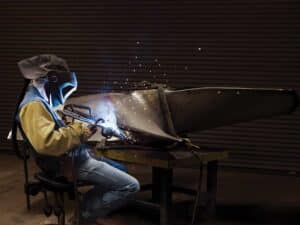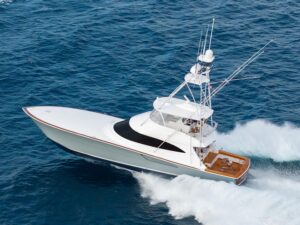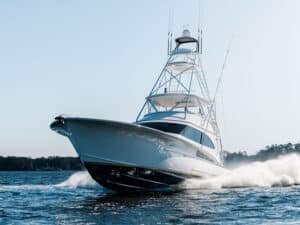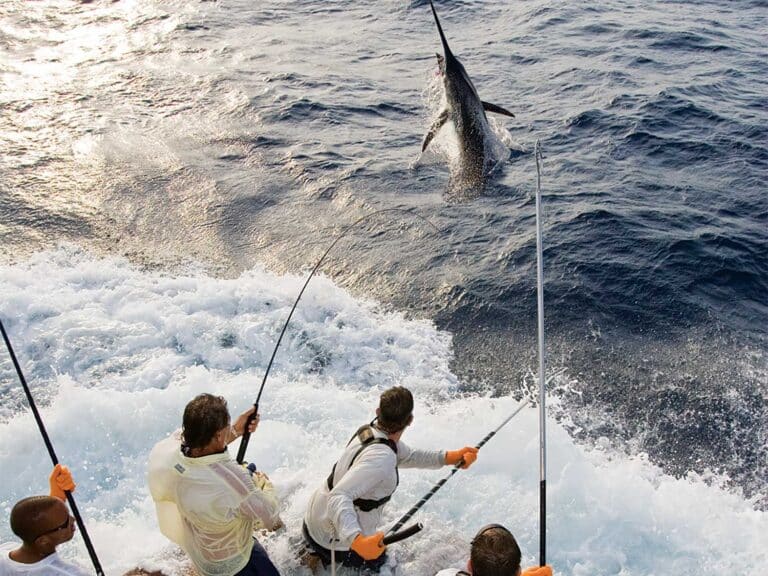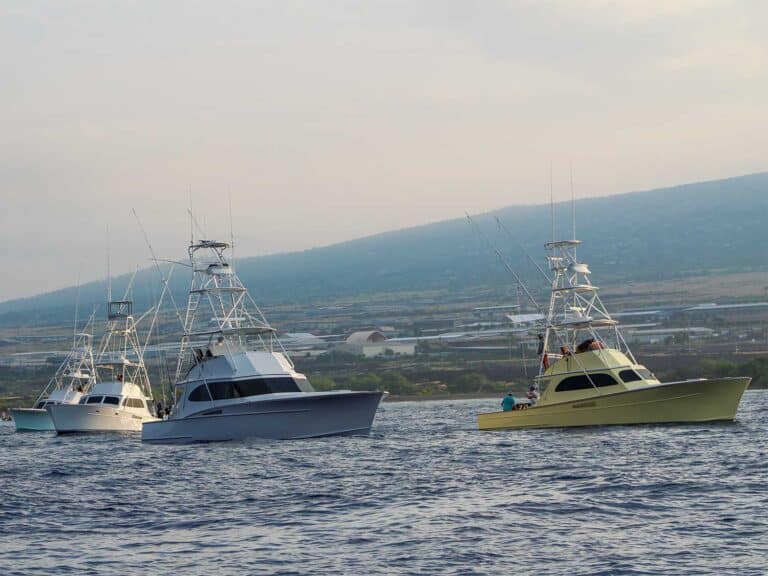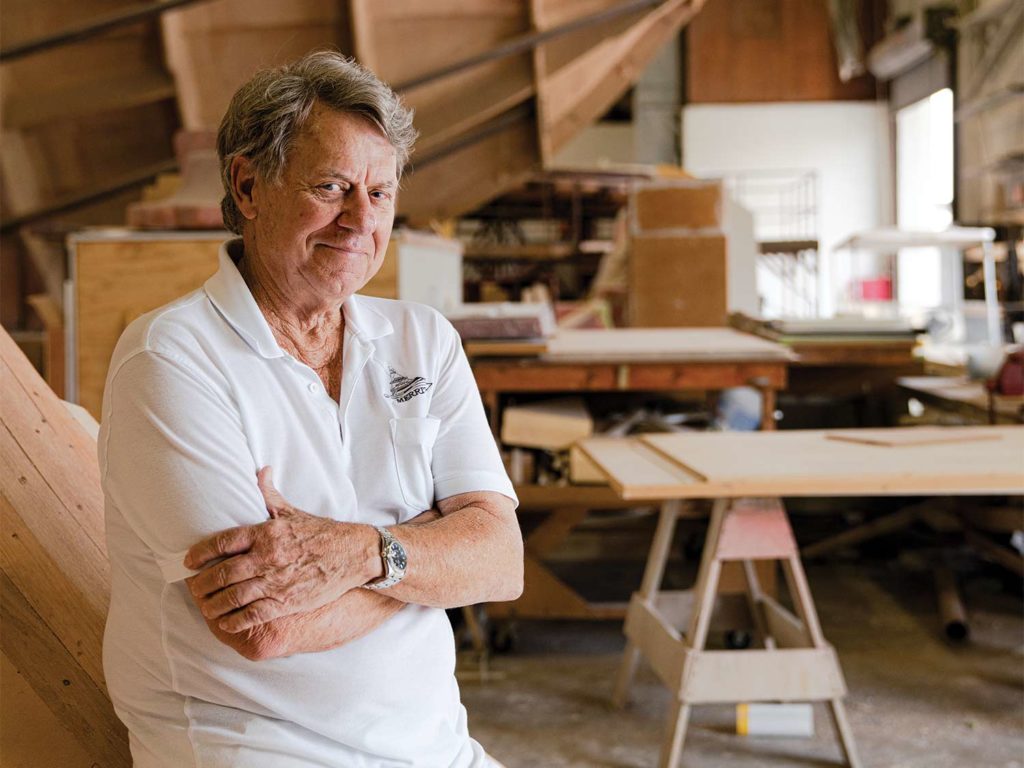
The Merritt family has been building boats since 1955, and Roy has been hands-on at the yard ever since he started working there as a young boy. After the death of his uncle, Buddy, he led the building charge from design to launch. He morphed the construction techniques from frame to cold-molded boats and then the use of advanced composites more than 40 years ago. Under his leadership, Merritt’s Boat & Engine Works has grown from a mom-and-pop boatyard to the mecca it is today. His first build was the 42-foot Caliban; since then, the Merritt boat has evolved from the giant tuna-chasing 37 and 42-/43-footers to the overbuilt, globe-traveling sport-fishermen built today. Its latest is Hull No. 110, an 88-footer.
Q: Who were the biggest influences on your style of boatbuilding?
A: I had two influential mentors. One was the Rybovich family, for obvious reasons. They established the look and platform of the modern sport-fishing boat that we still see today. The other was Jim Smith. He used to hang around the yard all the time, and he was always encouraging me to build a boat without all those frames. He’d say: “Let’s get rid of these frames. I’ll show you how to do it.” So he and I did a boat together, and that’s what took us from building plank-on-frame boats to cold-molded boats.
Q: Who influenced the designs over the years?
A: The Rybovich family and the early boats they built. Like everybody else, we took that basic look of the boat, and then we all tweaked it in one way or another to fit our own style. The side windows on the boat, for example, are almost like a Porsche 911, and they’ve been building that since 1966. I figure if it’s good enough for them, it’s fine for me. And besides, I have always liked the look of it.
Q: How was your relationship with your uncle, Buddy Merritt, on the boatbuilding side?
A: Well, for one thing, I worked with him a lot, and if you worked with him, you had to pay attention to what he was doing. He didn’t have much patience, but one thing he was always striving for was building the basic fish boat; keep it simple and functional. If I built a boat of my own right now, I’d keep it simple, probably to the point where no one else would want it. But there is always a need to keep the boat light, to keep it simple, and to build something that has some good value to it.
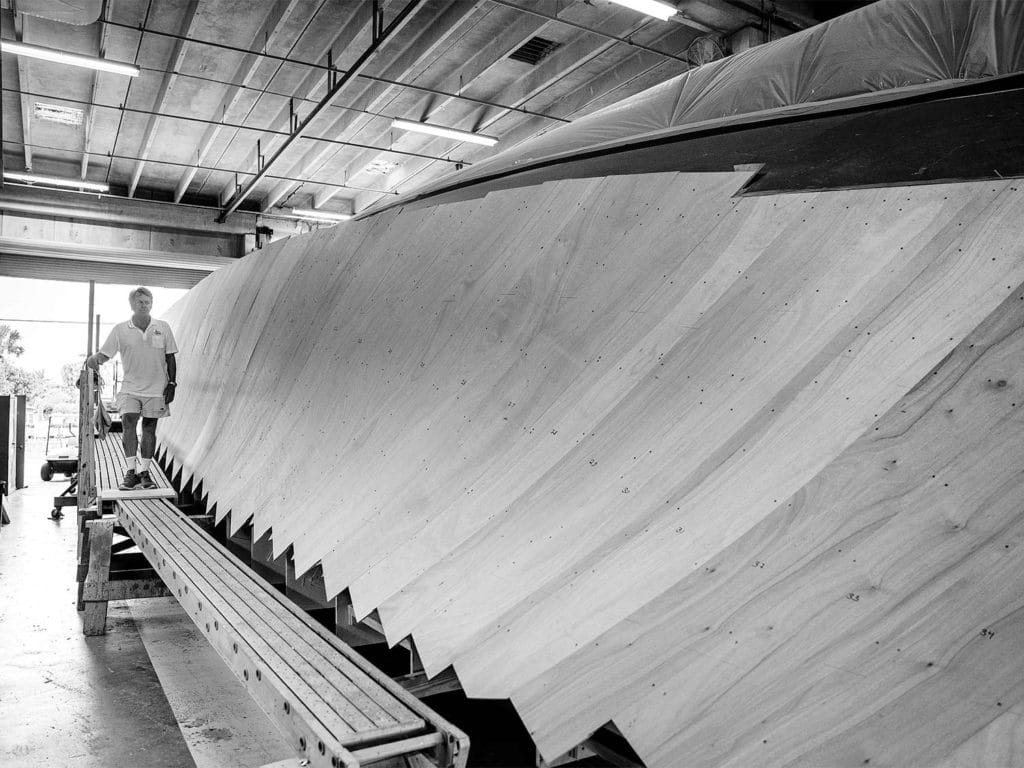
Q: From cold-molding, you evolved again to building molds and a series of glass boats: the 46s, 58s, 72s, 80s, 86s and now the new 77s. What was the reasoning behind that?
A: I went to a Chicago trade show, and I saw a new product called Klegecell, which is a closed-cell PVC foam. I listened to what they were doing with it, and I thought it was pretty neat. Instead of building these plywood hardtops that had a habit of getting heavy and just a lot of work, the main thing was the weight. I started looking into it and began building the hardtops out of composite, which led to us talking about everything else. The more I looked into things, the more I liked the prospect of building boats with this new core construction. I’d never had an interest in building fiberglass boats, but the core and other materials led to composite boatbuilding. You can mix anything you want for maximum benefit where you need it. It allows you to build something that has all the qualities of wood because it absorbs sound and it’s solid, but the main thing was the weight. It led us to understand that this was a much better way of doing things. It’s also a timesaver. It is a significant investment in molds, but if you think you want to build a certain-size boat, build a mold and then just go build them. It works well for us because we’re able to reproduce the same thing, and there are some big efficiencies in doing that, while still customizing [the boat] to the owner’s wishes.
Q: What is your favorite build to date?
A: The one we are building now. Whatever it is that we’re currently building, that’s always my favorite.
Read Next: Check out our review of Bree, a Merritt 86 Enclosed Bridge
Q: How did the early days of giant tuna fishing at Cat Cay in the Bahamas affect how your family built boats?
A: It affected everything because that was what we were doing. My uncle Buddy and my dad [Allen] were there on the scene in the 1950s and ’60s doing it, and it was the boat to have if you were tuna fishing. That’s what we were known for. It became the start of everything else. We also had the top captains and crews of the day running our boats, and they started going farther and fishing destinations that were previously almost unreachable.
Q: What is your favorite fishing destination?
A: Cat Cay. It is the most challenging fishery that is just different from anything else. It’s a combination of sight-fishing, presenting the bait, finesse boat driving, having the right crew and the right weather—a lot has to come together.
Q: Your favorite fish story?
A: I was with my father, having breakfast anchored up in the shallow water on the west side of Cat Cay during one tuna season, and a fish came up and just pushed right on the surface. The first thing my dad said was to be really quiet because it was flat and glassy-calm. We waited until the fish got up ahead of us, then we cranked her up, pulled the anchor and eased up to where the fish was moving. It was shallow, it was early, and you could see him really well. We put a bait to him and caught him. That’s extremely lucky!
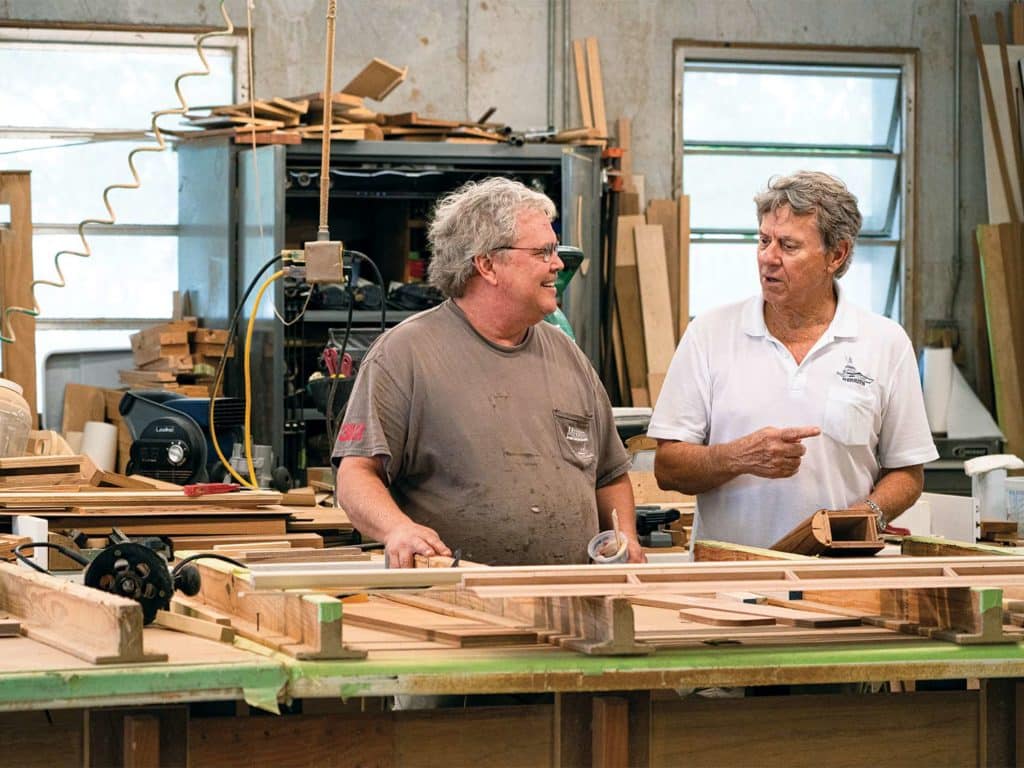
Q: What do you feel you do differently from other builders?
A: We have been moving forward with different materials for a long time. We’ve been doing composite construction for 40 years. We are very comfortable with it, and we know it makes the strongest boat. We learn a little with each one.
Q: Where is the industry headed in the next decade?
A: You can’t help what machinery weighs—the only thing that we can do is find stronger, lighter materials. That’s why we’re using core materials as well as vacuum-bagging and infusing processes along with carbon fiber to save weight and add strength. We keep getting a little bit better at it. The other place to get more bang for the buck out of speed is we’re adopting these wake-adapted struts and rudders. It’s a relatively new technology application for sport-fishing boats that gives us extreme smoothness and efficiency. Some people claim speed increases as much as 3 knots; I personally believe we’ll see 2 knots of gain out of it on our boats.
Q: What’s on the horizon for Merritt’s Boat & Engine Works?
A: More of the same. You go to work and you improve things, and as Pat Healey says, you build a better boat every day. —Capt. Karl Anderson
